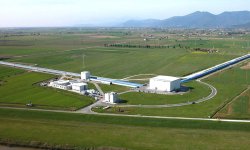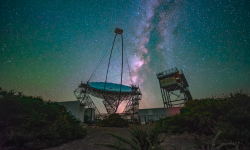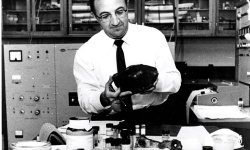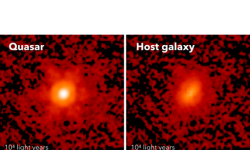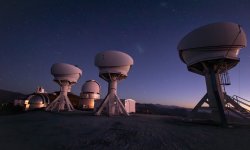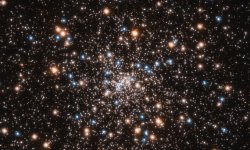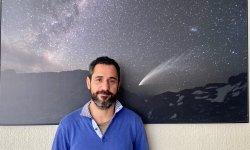
Pol Bordas, researcher from the High Energy Astrophysics group at the Institute of Cosmos Sciences of the University of Barcelona and the Institute of Space Studies of Catalonia (ICCUB-IEEC), has been recently designated as the deputy Physics Coordinator of the Large-Sized Telescope (LST) Collaboration, marking a significant milestone in his scientific career.
In the next years, Dr. Bordas will play a pivotal role in shaping the scientific direction of the collaboration, facilitating the interdisciplinary cooperation among the different working groups and laying out their strategic research topics, in alignment with the overall CTAO’s science case. His appointment as Deputy Physics Coordinator represents a significant endorsement of his scientific trajectory in the field and of his proven expertise and leadership skills.
The LST Collaboration is an international consortium of leading research institutions responsible for the design and construction of the Large-Sized Telescopes (LSTs), one of the three classes of telescopes required to cover the Cherenkov Telescope Array Observatory (CTAO) energy range, from 20 GeV to 300 TeV. Four LSTs will be arranged at the centre of the CTAO’s northern hemisphere array, located on La Palma (Spain), and an enhancement plan of the current layout includes also two LSTs in the southern array in the Atacama Desert (Chile).
The LSTs are optimized to cover the low-energy sensitivity of the Observatory, between 20 and 150 GeV. Although these telescopes stand 45 metres tall and weigh around 100 tonnes, they are extremely nimble, with the ability to reposition within 20 seconds to capture brief, low-energy gamma-ray signals. Both the fast-repositioning speed and the low-energy threshold provided by the LSTs are critical for CTAO’s studies of transient gamma-ray sources in our own Galaxy and for the study of active galactic nuclei and gamma-ray bursts at high redshift. Thus, the LST research topics are very broad: from studying the sources of gamma rays in both galactic systems (X-ray binaries, pulsars and their nebulae, stellar-mass black holes, supernova remnants, or star forming regions) and extragalactic sources (active galactic nuclei, gamma ray bursts or galaxy clusters), to shedding new light into fundamental physics questions, such as the origin of cosmic rays or the nature of dark matter in a multi-messenger context.
"I am deeply honoured to assume the role of Deputy Physics Coordinator," said Pol Bordas. "The LSTs will play a key role within the CTAO, which will become the most sensitive Gamma-Ray Observatory worldwide and so I look forward to witnessing the discoveries that the first data now being collected will bring."
High Energy Physics at the ICCUB-IEEC
The High-energy Astrophysics group at the ICCUB-IEEC has been present in the collaboration since the inception of its predecessors, the MAGIC telescopes. Our researchers make significant contributions to LST in both the technical area (working on data analysis as well as hardware and electronics design) and the scientific area. ICCUB-IEEC members initially focused on the study of possible gamma ray sources like galactic binaries and microquasars. Some of the suggested sources were later observed by the Cherenkov Telescopes, like the detection of LS I +61 303 which resulted in the first publication of the MAGIC Collaboration in Science.
Thanks to this initial involvement, the High-Energy Astrophysics group started taking on bigger and bigger areas and growing in members. The Technological Unit of the ICCUB, led by Dr. David Gascón, opened a new research line focused on improving the LST hardware, and on the design and development of its electronics, which have undergone a huge advance in recent years and are now basic components of the telescope. The team counts also with a new PhD researcher to work on the Data Analysis and Software Development for the LST, making the ICCUB-IEEC present in both the Scientific, Instrumentation and Computation areas of the Collaboration.
“Our idea is to continue these lines of research in Cherenkov Astrophysics. The fact that I have been offered this new responsibility, makes it our goal to establish this branch of astrophysics as what I personally think it is: a new window for the study the very high-energy Universe,” says Pol Bordas.
About the Large-Sized Telescope Collaboration
The Large-Sized Telescope (LST) Collaboration consists of more than 400 scientists and engineers from twelve countries dedicated to the development and operation of these cutting-edge telescopes for the study of gamma-ray astrophysics. Comprising leading scientists and engineers from around the world, the collaboration is committed to advancing our understanding of high-energy astrophysical phenomena and pushing the boundaries of scientific exploration, as part of the Cherenkov Telescope Array Observatory (CTAO), which will be the first open ground-based gamma-ray observatory and the world’s largest and most sensitive instrument for the exploration of the high-energy Universe.
When gamma rays reach the Earth’s atmosphere they interact with it, producing cascades of subatomic particles. These cascades are also known as air or particle showers. Nothing can travel faster than the speed of light in a vacuum, but light travels 0.03 percent slower in air. Thus, these ultra-high energy particles can travel faster than light in air, creating a blue flash of “Cherenkov light” (discovered by Russian physicist Pavel Cherenkov in 1934) similar to the sonic boom created by an aircraft exceeding the speed of sound. Although the light is spread over a large area (250 m in diameter), the cascade only lasts a few billionths of a second. It is too faint to be detected by the human eye but not too faint for the CTAO. The CTAO’s large mirrors and high-speed cameras will detect the flash of light and image the cascade generated by the gamma rays for further study of their cosmic sources.
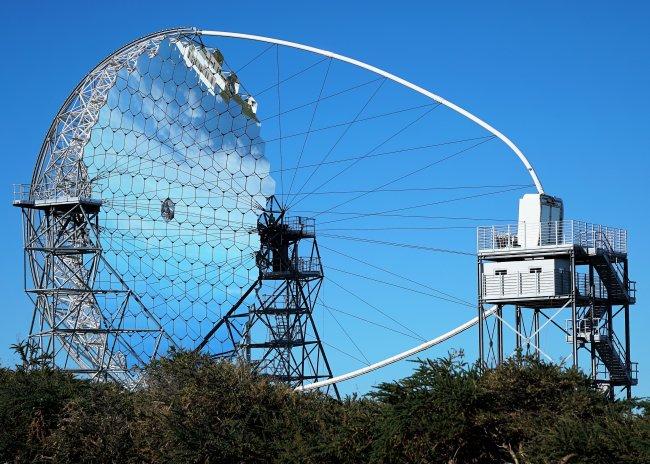
The CTAO will use three types of telescopes: the Large-Sized Telescopes (LST), the Medium-Sized Telescopes (MST) and the Small-Sized Telescopes (SST). More than 60 telescopes will be distributed between two telescope array sites: CTAO-North in the northern hemisphere at the Instituto de Astrofísica de Canarias’s (IAC’s) Roque de los Muchachos Observatory on La Palma (Spain), and CTAO-South in the southern hemisphere near the European Southern Observatory’s (ESO’s) Paranal Observatory in the Atacama Desert (Chile).
The European Space Agency’s Science Programme Committee has approved today the Laser Interferometer Space Antenna (LISA) mission, the first scientific endeavour to detect and study gravitational waves from space. The scientific contribution in Spain is led by the Institute of Space Sciences (ICE-CSIC) and the Institute of Space Studies of Catalonia (IEEC) and it counts with the participation of the Institute of Cosmos Sciences of the University of Barcelona (ICCUB).
ESA recognises through this step, formally called ‘adoption’, that the mission concept and technology are sufficiently advanced, and gives the go-ahead to build the instruments and spacecraft. This work will start in January 2025 once a European industrial contractor has been chosen.
LISA is not just one spacecraft but a constellation of three. They will trail Earth in its orbit around the Sun, forming an exquisitely accurate equilateral triangle in space. Each side of the triangle will be 2.5 million km long (more than six times the Earth-Moon distance), and the spacecraft will exchange laser beams over this distance. The launch of the three spacecraft is planned for 2035, on an Ariane 6 rocket. The ICCUB Technology Unit will participate actively in two aspects: the construction of a radiation sensor on board the satellites, and the definition of the distributed data processing center in Barcelona.
Bringing ‘sound’ to the cosmic movie
Just over a century ago, Einstein made the revolutionary prediction that when massive objects accelerate, they shake the fabric of spacetime, producing miniscule ripples known as gravitational waves. Thanks to modern technological developments, it is now possible to detect these most elusive of signals.
LISA will detect, across the entire Universe, the ripples in spacetime caused when huge black holes at the centres of galaxies collide. This will enable scientists to trace the origin of these objects, to chart how they grow to be millions of times more massive than the Sun and to establish the role they play in the evolution of galaxies.
“LISA is an endeavour that has never been tried before. Using laser beams over distances of tens of kilometres, ground-based instrumentation can detect gravitational waves coming from events involving star-sized objects – such as supernova explosions or merging of hyper dense stars and stellar-mass black holes. To expand the frontier of gravitational studies we must go to space,” explains LISA lead project scientist Nora Lützgendorf.
The mission is poised to capture the predicted gravitational ‘ringing’ from the initial moments of our Universe and offer a direct glimpse into the very first seconds after the Big Bang. Additionally, because gravitational waves carry information on the distance of the objects that emitted them, LISA will help researchers measure the change in the expansion of the Universe with a different type of yardstick from the techniques used by the Euclid space mission and other surveys, validating their results.
In our own galaxy, LISA will detect many merging pairs of compact objects like white dwarfs or neutron stars and give us a unique insight into the final stages of the evolution of these systems. By pinpointing their position and distances, LISA will further our grasp of the structure of the Milky Way.
To detect gravitational waves, LISA will use pairs of solid gold-platinum cubes – so called test masses (slightly smaller than Rubik’s cubes), free-floating in special housing at the heart of each spacecraft. Gravitational waves will cause tiny changes in the distances between the masses in the different spacecraft, and the mission will track these variations using laser interferometry.
This technique requires shooting laser beams from one spacecraft to the other and then superimposing their signal to determine changes in the masses’ distances down to a few billionths of a millimetre. The spacecraft must be designed to ensure that nothing, besides the geometry of spacetime itself, affects the movement of the masses, which are in freefall.
Spanish contribution to LISA
Led by ESA, LISA is made possible by a collaboration between ESA, NASA, and an international consortium of scientists (the LISA consortium). The Spanish contribution is led by the ICE-CSIC together with the Institute of Cosmos Sciences of the Barcelona University (ICCUB) and the Universitat Politécnica de Cataluña - BarcelonaTech (UPC), through researchers all of them affiliated members of IEEC.
The Spanish contribution focuses on the Science Diagnostics Subsystem (SDS), one of the three main flight subsystems. Its goal is to measure the environmental disturbances on board each satellite in the constellation in order to differentiate them from the effect that gravitational waves would produce. The SDS will have temperature, magnetic field and radiation sensors on each satellite.
“In order to detect gravitational waves, LISA will measure the displacement between free falling masses in each of the three satellites in space at an unprecedented level down to the picometre level, roughly speaking the size of atoms”, says Miquel Nofrarias, experimental researcher at ICE-CSIC and IEEC, and member of the LISA Consortium. “SDS sensors will have to reach levels of precision and stability also unprecedented in space to be able to differentiate the effect of tiny environmental fluctuations from the one produced by a gravitational wave”, he adds.
Besides the contribution to the LISA instrument, the ICE-CSIC will also lead the development of a Spanish Data Distribution Center together with the necessary algorithms for the science exploitation. "The main goal is to provide the Spanish scientific community with the tools required to make the science potential of LISA a reality, so that we can make revolutionary discoveries with impact in Astrophysics, Cosmology and Fundamental Physics", says Carlos F. Sopuerta, ICE-CSIC and IEEC researcher and member of ESA’s LISA Science Study Team.
The spacecraft follows in the footsteps of its predecessor LISA Pathfinder, which demonstrated that it is possible to keep the test masses in freefall to an astonishing level of precision. The Spanish contribution to LISA Pathfinder, launched in 2015, was also led by ICE-CSIC and IEEC within the Gravitational Astronomy research group of the ICE-CSIC.
Science is often imagined as purely objective and rational, but being a human endeavor, it shares the same lights and shadows of all the other human enterprises. In particular according the Matthew effect there is an imbalance in the way credit for scientific work is assigned by peers: roughly speaking, this means that in the case of collaborative work or multiple simultaneous discoveries, the already famous scientists get all or most of the credit.
In this paper led by researcher Livia Conti (former head of Virgo Outreach), and with the collaboration of Pablo Barneo from the Institute of Cosmos Sciences of the University of Barcelona (ICCUB-IEEC), researchers consider the specific case of LIGO, Virgo and KAGRA, where we detect a similar pattern of imbalance in the assignment of due credit by many members of the wider scientific community.
In 2015, scientists from LIGO and Virgo made a groundbreaking discovery: they found gravitational waves (GW), a phenomenon predicted by Einstein a century earlier. This important finding was announced to the public in early 2016. Since then, the collaboration between LIGO, Virgo, and KAGRA has detected nearly a hundred signals during three observing runs, using Advanced LIGO detectors in the US and the Advanced Virgo detector in Italy. These discoveries have sparked widespread interest, turning GW-based astrophysics and cosmology into a thriving area of scientific research.
Although the LIGO and Virgo Collaborations have been acting as a single collaboration since 2007, the team noted that this is not always recognized in the wider scientific community where it is frequent to find that shared results are attributed to LIGO only: in other words the narrative of the scientific developments is biased, with a potential impact on the history of science itself as well as on the careers of young scientists associated with Virgo or KAGRA. This problem propagates to funding agencies, which are influenced by the media mirroring the incomplete credits given by some of the problematic papers.
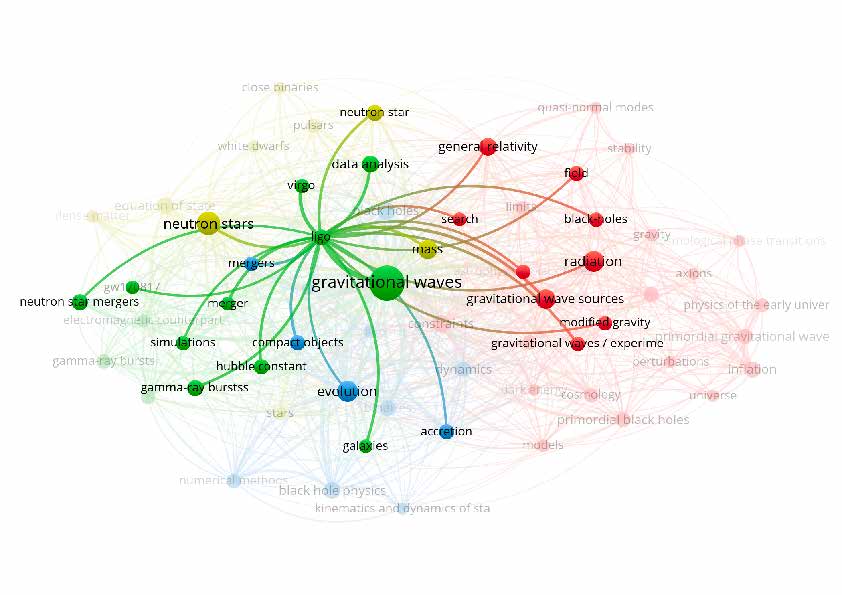
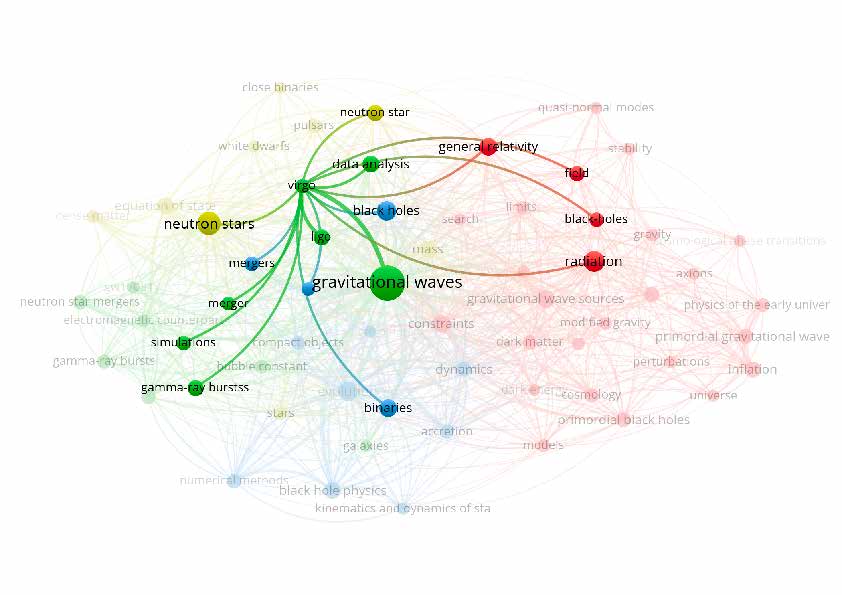
in the number of citations to LIGO and Virgo. Credit: VIRGO Collaboration
The observation of this biased narrative in a steadily growing number of papers prompted the team to implement an approach to systematically detect it, and if possible correct it. For 1 year starting from January 2022 they check all preprints appearing daily in the arXiv repository citing 'LIGO': we find on average 8 problematic, corresponding to about 9% of all papers containing the word “LIGO”.
The study not only focuses on identifying the problem at hand, but it also presented a solution. The team started asking the authors of problematic papers to fix their texts with the goal to convince the scientific community of the necessity of a correct scientific narrative. This initiative received replies from 48% of the recipients of requests, and the vast majority expressed understanding and their willingness to edit the preprints at the next occasion. The researchers found that their actions did partially correct the situation, as a follow-up analysis verified that some of the papers are indeed fixed.
The knowledge of the social dynamics of this particular cognitive bias is still quite poor and lots of work could be done to answer several remaining questions. In particular, it would be interesting to detect and quantify the time that the scientific community takes to correct this bias: this would shed light on socially accepted habits in this field of science. Similar studies in other fields of knowledge could yield different values that could help characterize the different scientific communities.
Finally we note that here we have focused on issues related to the visibility of the Virgo Collaboration. However, the LIGO Scientific Collaboration and Virgo Collaboration have been joined in the beginning of 2021 by the KAGRA Collaboration in co-authoring observational results from the full third observational period O3. Hence, it would be interesting to extend the study of cognitive bias by considering KAGRA as well.
On 15 December, the Large-Sized Telescope (LST) Collaboration announced via an Astronomer's Telegram (ATel) the detection of the source OP 313 at very high energies with LST-1. Although OP 313 was known at lower energies, it had never been detected above 100 GeV, making this the first scientific discovery of LST-1. With these results, OP 313 becomes the most distant Active Galactic Nucleus (AGN) ever detected by a Cherenkov telescope, demonstrating once again the outstanding performance of the LST prototype as it continues its commissioning at CTAO-North on the island of La Palma.
OP 313 is a type of AGN known as a Flat Spectrum Radio Quasar or FSRQ. These are very luminous objects found at the centres of some galaxies, where a supermassive black hole devours material from its surroundings, creating powerful accretion discs and jets of light and relativistic particles.
The LST-1 observed this source between 10 and 14 December, after receiving an alert from the Fermi-LAT satellite showing unusually high activity in the low-energy gamma-ray range, which was also confirmed in the optical range with different instruments. With only four days of data, the LST Collaboration was able to detect the source above 100 Gigaelectronvolts (GeV), an energy level a billion times higher than the visible light that humans can perceive.
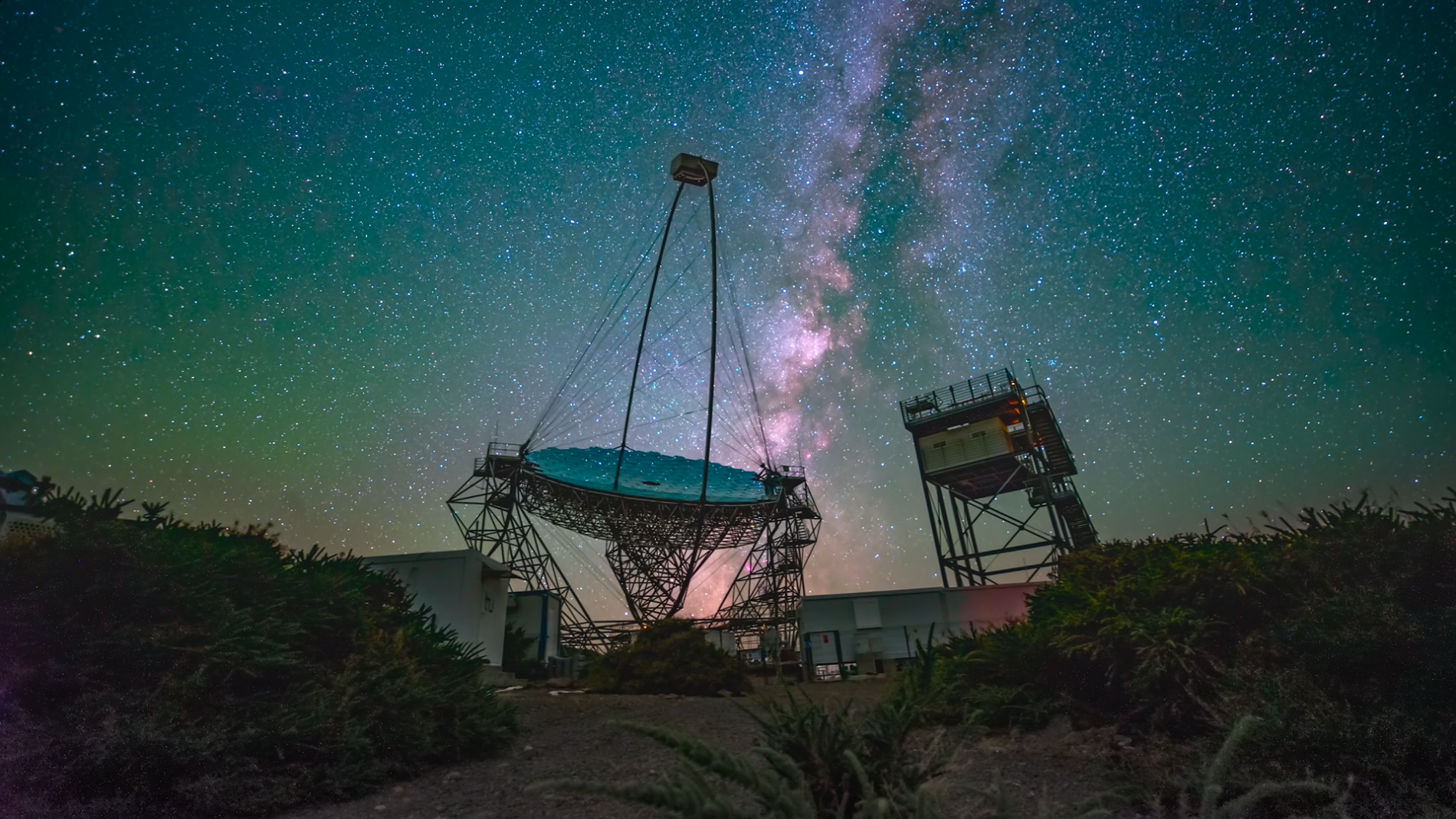
LST-1 Telescope, in La Palma. Credit: CTAO gGmbH
Only nine quasars are known at very high energies, and OP 313 is now the tenth. In general, quasars are more difficult to detect at very high energies than other types of AGN. This is not only because the brightness of their accretion disk weakens the emission of gamma rays, but because they are further away. In this case, OP 313 is located at a redshift of 0.997 or ~8 billion light years away, making it the most distant AGN and the second most distant source ever detected at very high energies.The more distant the source, the more difficult it is to observe at very high energies due to the so-called Extragalactic Background Light or EBL. The EBL is the collective light emitted by all objects outside the Milky Way that expands across multiple wavelengths, from visible, infrared and ultraviolet. The EBL interacts with very high-energy gamma rays, attenuating their flux and, thus, making their observation challenging. The characteristics of the LST-1, with an optimized sensitivity for the CTAO’s low energy range, between 20 and 150 GeV, where gamma rays are less affected by the EBL, enabled the LST Collaboration to extend the study of this source to tens of GeV for the first time.
The LST Collaboration will continue to observe this source with the LST-1 to expand the dataset and, thus, obtain a more precise analysis that allows scientists to improve their understanding of the EBL, study the magnetic fields within this type of source or delve into fundamental intergalactic physics.
About the LST
The Large-Sized Telescope (LST) is one of three types of telescopes that will be built to cover the entire energy range of the CTAO (20 GeV - 300 TeV). Four LSTs will be installed at the centre of the northern hemisphere array on La Palma, Spain, and two more are planned for the southern hemisphere array. These telescopes are optimised to cover the low-energy sensitivity between 20 and 150 GeV. Each LST is a giant 23-metre diameter telescope with a mirror area of about 400 square metres and a pixel camera consisting of 1855 light sensors capable of detecting single photons with high efficiency. Although the LST is 45 metres tall and weighs about 100 tonnes, it is extremely agile and has the ability to reposition itself in 20 seconds to capture brief, low-energy gamma-ray signals. Both the fast repositioning speed and the low energy threshold provided by LSTs are essential for studies of transient gamma-ray sources in our own galaxy and for the study of active galactic nuclei and gamma-ray bursts at high redshift. The LST prototype, LST-1, is built at CTAO-North and is currently in commissioning. It is expected to become CTAO's first telescope once commissioning is completed and it has been officially accepted.
The LST Collaboration consists of more than 400 scientists and engineers from 67 different institutions in twelve countries. Telescope operations and maintenance, as well as data collection, analysis, and technical and scientific publications, are only possible thanks to the collaborative effort of the entire LST Collaboration.
About the CTAO
The Cherenkov Telescope Array Observatory (CTAO) will be the first ground-based gamma-ray observatory open to the scientific community and the world's largest and most sensitive instrument for exploring the Universe at high energies. The CTAO's unparalleled precision and wide energy range (20 GeV-300 TeV) will provide novel insights into the most extreme and powerful events in the Cosmos, addressing questions inside and outside astrophysics that fall under three main themes: understanding the origin and role of relativistic cosmic particles, studying extreme environments (such as black holes and neutron stars) and exploring frontiers in physics (such as the nature of dark matter). To do this, the CTAO will use three types of telescopes: Large-Sized Telescopes (LSTs), Medium-Sized Telescopes (MSTs) and Small-Sized Telescopes (SSTs). More than 60 telescopes will be distributed between two telescope arrays: CTAO-North in the northern hemisphere at the Roque de los Muchachos Observatory of the Instituto de Astrofísica de Canarias (IAC) on La Palma (Spain), and CTAO-South in the southern hemisphere near the Paranal Observatory of the European Southern Observatory (ESO) in the Atacama Desert (Chile). The CTAO headquarters are hosted at the Istituto Nazionale di Astrofisica (INAF) in Bologna (Italy), and the Science Data Management Centre (SDMC) is hosted at the Deutsches Elektronen-Synchrotron (DESY) in Zeuthen (Germany). The CTAO will also be the first observatory of its kind to be open to the scientific communities worldwide as a resource for data from unique, high-energy astronomical observations.
The CTAO gGmbH works closely with partners around the world for the development of the Observatory. Key partners include in-kind contribution teams, such as the telescope teams that are developing essential hardware and software, as well as CTAC, an international group of researchers who have provided scientific guidance since the beginning of the project.
The CTAO was promoted to "Milestone" in the 2018 Roadmap of the European Forum on Research Infrastructures (ESFRI), and was ranked as the top priority among new ground-based infrastructures in the ASTRONET Roadmap 2022-2035.
A ground-breaking study led by Mar Carretero-Castrillo, a predoctoral researcher at the Institute of Cosmos Sciences of the University of Barcelona (ICCUB) and the Institute of Space Studies of Catalonia (IEEC), has identified a significant population of runaway stars in the Milky Way using data from the Gaia Data Release 3 (DR3). The paper, titled "Galactic runaway O and Be stars found using Gaia DR3," reveals new insights into the dynamics of massive stars and their intriguing behaviours.
The research, published last week in Astronomy and Astrophysics, introduces a novel two-dimensional method in velocity space to uncover massive and young runaway stars, which are moving with a high velocity with respect to their surrounding stars. The study focused on the stars present in the Galactic O-Star Catalogue and Be Star Spectra Database, utilizing Gaia DR3 precise astrometric measurements to derive velocities in the plane of the sky. O and Be stars are hot, massive and young stars. In particular, Be stars contain a circumstellar disk surrounding them.
The team identified 106 runaway O stars, with 42 new discoveries and 69 Be runaway stars, 47 of which are new discoveries. Runaway stars exhibited on average a large distance from the Galactic plane, which is indicative of past ejections. Also, seven X-ray binaries and one gamma-ray binary, showing high-energy emission, were found among the runaway stars. This could strengthen the idea that a fraction of runaways can be part of the population of high-energy sources.
Massive young stars play a crucial role in various astrophysical phenomena, from gamma-ray bursts to supernova explosions. In the present study, over 25% of O stars and 5% of Be stars are found to be runaway stars, with O stars showing larger velocities. Massive runaway stars can be produced by dynamical ejection in star clusters or by supernova explosions in binary systems. The study favours the former based on the observed percentages and velocities.
In addition, the study's comprehensive simulations in the three-dimensions velocity space suggest that the percentages of runaway O and Be stars could be even higher than observed. The findings open avenues for identifying more and new runaway stars in our Galaxy, making use of radial velocities in the future.
Mar Carretero-Castrillo, Lead Author, ICCUB: "the identification of so many massive runaway stars opens the door to discover new interesting astrophysical sources. We have released the catalogues of the runaway stars found in open format to the scientific community to maximize the exploitation of the potential discoveries”.
This groundbreaking research not only expands our understanding of massive star dynamics but also sets the stage for further investigations into high-energy systems associated with runaway stars.
Reference:
M. Carretero-Castrillo, M. Ribó, J. M. Paredes
Astronomy & Astrophysics, Volume 679, November 2023, 21 pages
The conference will be opened by the vice-rector for research of the UB, Jordi Garcia Fernández. Leading researchers will analyze the contributions of the Catalan scientist in fields such as chemistry, physics and biology at the morning session organised by the UB. Joan Anton Català, curator of the Oró Year and science communicator, will give the lecture "Joan Oró, the dream of searching for the origin of life". Carme Jordi, professor at the UB Faculty of Physics and researcher at the Institute of Cosmos Sciences of the UB (ICC-UB), will give the lecture "Search for life beyond the solar system". Andrea Butturini, lecturer at the UB Faculty of Biology, will give a talk titled "Controversies surrounding methane on Mars". Josep Maria Ribó, lecturer in the Faculty of Chemistry at the UB, will speak on "The origin of biological homochirality".
Xavier Palau, representative of the Joan Oró Foundation, will then explain the connection that the Catalan biochemist had with the Montsec Mountain. Xavier Molí, from the Montsec Astronomical Park, will give the talk "Montsec Astronomical Park: discovering the best sky in Catalonia". Finally, Marc Ribó, lecturer at the Faculty of Physics, will give a talk on "The Montsec Observatory and research with the Joan Oró Telescope". The morning session will be moderated by Xavier Luri, professor at the Faculty of Physics and director of the ICCUB.
The year 2023, officially declared Joan Oró Year by the Catalan Government, has been the setting for various activities, talks and workshops in tribute to the figure of the biochemist from Lleida.
Joan Oró i Florensa studied biochemistry at the UB and devoted his career to studying the origin of life, a field in which he made major contributions that have inspired later generations of scientists.

A group of scientists led by Stefano Torniamenti (University of Padova) and in close collaboration with Mark Gieles (ICREA, ICCUB-IEEC), Friedrich Anders (ICCUB-IEEC), have published new results that hint at the existence of several black holes in the Hyades cluster, making them the closest black holes to Earth ever detected. The work was carried out during a research stay of Dr. Torniamenti at the Institute of Cosmos Sciences of the University of Barcelona (ICCUB), one of the research units conforming the Institute of Space Studies of Catalonia (IEEC) and it appeared in the Monthly Notices of the Royal Astronomical Society this September.
Since their discovery, black holes have been one of the most mysterious and fascinating phenomena in our Universe, becoming an object of study for researchers all over the world. This is particularly true for small black holes, because they have been the most observed during the detection of gravitational waves. Since the detection of the first gravitational waves in 2015, the detectors have observed many events which correspond to mergers of pairs of lower-mass black holes.
In the newly published paper, the team of astrophysicists use simulations that follow the motion and evolution of all the stars of the Hyades, which is the closest open cluster to our Solar System (its distance to the Sun is approximately 45 parsecs or 150 light years) to reproduce its current state. Open clusters are loosely bound groups of hundreds of stars that share some properties such as their age and chemical characteristics. The results of the simulation were then compared to the actual position and velocities of the Hyades stars, which are now accurately known thanks to the observations made by the Gaia Satellite of the European Space Agency (ESA).
“Our simulations can only simultaneously match the mass and size of the Hyades if some black holes are present at the cluster centre at the present day (or until recently)” says Stefano Torniamenti, now postdoctoral researcher at the University of Padova and first author of the paper. The work was done during a research stay of Dr. Torniamenti at the ICCUB and it is the result of the close collaboration of the University of Padova, the Institute of Cosmos Sciences of the University of Barcelona (ICCUB-IEEC), the University of Cambridge (UK), the European Southern Observatory (ESO) and Sun Yat-sen University (China).
The Hyades observed properties are best reproduced by simulations with 2 or 3 black holes at the present day although the simulations where all the black holes were recently ejected (less than 150 million years ago, roughly the last quarter of the age of the cluster) can still give a good match because the cluster’s evolution could not erase the imprints of its previous black hole population.
The new results indicate that the black holes born in the Hyades are still inside the cluster, or very near the cluster, which makes them the closest black holes to the Sun, much closer than the prior candidate, the black hole Gaia BH1, which is at 480 parsecs from the Sun.
In the last few years, the advent of the ESA Gaia space telescope has allowed us, for the first time, to study in detail the position and velocity of the stars of open clusters, and to identify each star with confidence.
“This observation helps us to understand how the presence of black holes affects the evolution of star clusters and how in turn star clusters contribute to the gravitational wave sources ”, comments Prof Mark Gieles, host of the first author in Barcelona. “These results also give us a glimpse at how these mysterious objects are distributed throughout the galaxy.”
Paper details
“Stellar-mass black holes in the Hyades star cluster?”
DOI: 10.1093/mnras/stad1925
Contact information
Stefano Torniamenti
University of Padova, Italy
Email: s.torniamenti@gmail.com
Mark Gieles
ICREA, Institute of Cosmos Sciences of the University of Barcelona (ICCUB), Institute of Space Studies of Catalonia (IEEC)
Barcelona, Spain
Email: mgieles@icc.ub.edu
New images from the James Webb Space Telescope have revealed, for the first time, starlight from two massive galaxies hosting actively growing black holes – quasars – seen less than a billion years after the Big Bang. A new study in Nature this week finds the black holes have masses close to a billion times that of the Sun, and the host galaxy masses are almost one hundred times larger, a ratio similar to what is found in the more recent universe. A powerful combination of the Subaru Telescope and the JWST has paved a new path to study the distant universe.
The existence of such massive black holes in the distant universe has created more questions than answers for astrophysicists. How could these black holes grow to be so large when the universe was so young? Even more puzzling, observations in the local universe show a clear relation between the mass of supermassive black holes and the much larger galaxies in which they reside. The galaxies and the black holes have completely different sizes, so which came first: the black holes or the galaxies? This is a “chicken-or-egg” problem on a cosmic scale.
An international team of researchers, led by Kavli Institute for the Physics and Mathematics of the Universe (Kavli IPMU) Project Researcher Xuheng Ding and Professor John Silverman, and Peking University Kavli Institute for Astronomy and Astrophysics (PKU-KIAA) Kavli Astrophysics Fellow Masafusa Onoue have started to answer this question with the James Webb Space Telescope (JWST), launched in December 2021. Studying the relation between host galaxies and black holes in the early universe allows scientists to watch their formation, and see how they are related to one another.
"The central black hole acts on its hosting galaxy in some way to produce the observed relation. Understanding this mechanism is a hot topic and this paper will bring us closer to doing so", says Dr. Kazushi Iwasawa, researcher of the Institute of Cosmos Sciences of the University of Barcelona (ICCUB) and the Institute of Space Studies of Catalonia (IEEC) and one of the core members of the team that discovered the early-universe quasars.
Quasars are luminous, while their host galaxies are faint, which has made it challenging for researchers to detect the dim light of the galaxy in the glare of the quasar, especially at great distances. Before the JWST, the Hubble Space Telescope was able to detect host galaxies of luminous quasars when the universe was just under 3 billion years old, but no younger.
The superb sensitivity and the ultra-sharp images of the JWST at infrared wavelengths finally allowed researchers to push these studies to the time when the quasars and galaxies first formed. Just a few months after JWST started regular operations, the team observed two quasars, HSC J2236+0032 and HSC J2255+0251, at redshifts 6.40 and 6.34 when the universe was approximately 860 million years old. These two quasars were discovered in a deep survey program of the 8.2m-Subaru Telescope on the summit of Maunakea in Hawai’i. The relatively low luminosities of these quasars made them prime targets for measurement of the host galaxy properties, and the successful detection of the hosts represents the earliest epoch to date at which starlight has been detected in a quasar.
The images of the two quasars were taken at infrared wavelengths of 3.56 and 1.50 micron with JWST’s NIRCam instrument, and the host galaxies became apparent after carefully modeling and subtracting glare from the accreting black holes. The stellar signature of the host galaxy was also seen in a spectrum taken by JWST’s NIRSPEC for J2236+0032, further supporting the detection of the host galaxy.
Analyses of the host galaxy photometry found that these two quasar host galaxies are massive, measuring 130 and 34 billion times the mass of the Sun, respectively. Measuring the speed of the turbulent gas in the vicinity of the quasars from the NIRSPEC spectra suggest that the black holes that power them are also massive, measuring 1.4 and 0.2 billion times the mass of the Sun. The ratio of the black hole mass to host galaxy mass is similar to those of galaxies in the more recent past, suggesting that the relationship between black holes and their hosts was already in place 860 million years after the Big Bang.
Ding, Silverman, Onoue and their colleagues will continue this study with a larger sample using scheduled Cycle 1 JWST observations, which will then further constrain models for the coevolution of black holes and their host galaxies. The team recently learned that they have been awarded additional time for JWST in its next cycle to study the host galaxy of J2236+0032 in much more detail.
Details of this study were published in Nature on June 28.
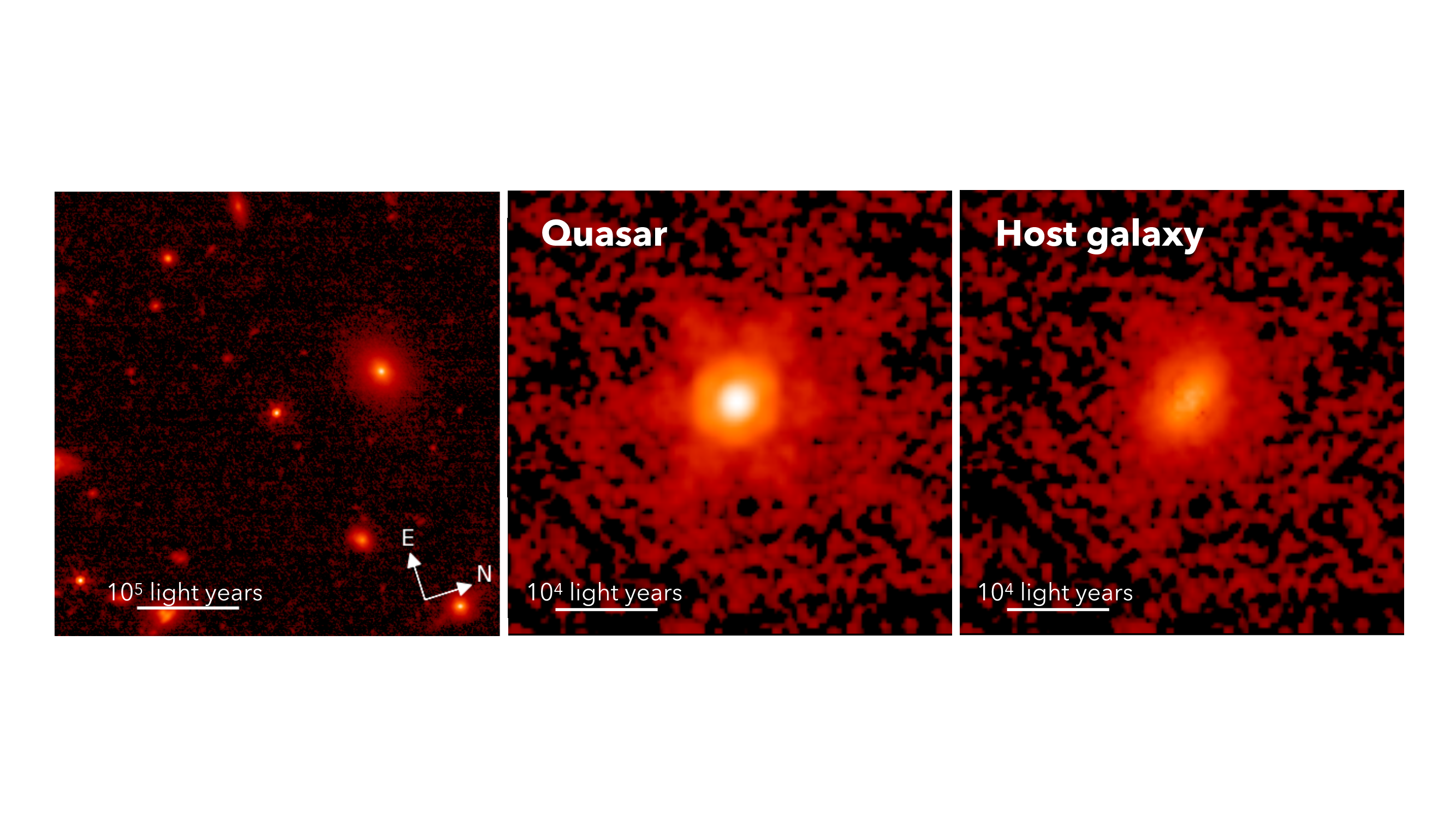
Paper details
“Detection of stellar light from quasar host galaxies at redshifts above 6”
DOI: 10.1038/s41586-023-06345-5
Related links
Astronomers Discover 83 Supermassive Black Holes in the Early Universe (Subaru Telescope press release on March 13, 2019)
https://subarutelescope.org/en/results/2019/03/13/2731.html
Expressing the distance to remote objects
https://www.nao.ac.jp/en/astro/glossary/expressing-distance.html
About the Hyper Suprime-Cam Subaru Strategic Survey (HSC-SSP)
The Hyper Suprime-Cam Subaru Strategic Program (HSC-SSP) is a three-layered imaging survey, using the Hyper Suprime-Cam on the 8.2m Subaru Telescope on the summit of Maunakea in Hawai’i, aimed at addressing some of the most important and outstanding questions in astronomy today, including the nature of dark matter and dark energy.
The survey consisted of 330 nights of observation time on the Subaru Telescope between 2014 and 2021, mapping out an area of more than 1100 square degrees, or 5,500 times the area of the Moon, of the deep universe.
The HSC-SSP is led by the astronomical communities of Japan and Taiwan, and Princeton University.
The BlackGEM array, consisting of three new telescopes located at ESO’s La Silla Observatory, has begun operations. The telescopes will scan the southern sky to hunt down the cosmic events that produce gravitational waves, such as the mergers of neutron stars and black holes.
Some cataclysmic events in the Universe, such as the collision of black holes or neutron stars, create gravitational waves, ripples in the structure of time and space. Observatories like the Laser Interferometer Gravitational-Wave Observatory (LIGO) and the Virgo Interferometer are designed to detect these ripples. But they cannot pinpoint their origin very accurately nor see the fleeting light that results from the collisions between neutron stars and black holes. BlackGEM is dedicated to quickly scanning large areas of the sky to precisely hunt down gravitational-wave sources using visible light.
“With BlackGEM we aim to scale up the study of cosmic events with both gravitational waves and visible light,” says Paul Groot of Radboud University in the Netherlands, the project’s Principal Investigator. “The combination of the two tells us much more about these events than just one or the other.”
By detecting both gravitational waves and their visible counterparts, astronomers can confirm the nature of gravitational-wave sources and determine their precise locations. Using visible light also allows for detailed observations of the processes that occur in these mergers, such as the formation of heavy elements like gold and platinum.
To date, however, only one visible counterpart to a gravitational-wave source has ever been detected. Furthermore, even the most advanced gravitational-wave detectors such as LIGO or Virgo cannot precisely identify their sources; at best, they can narrow the location of a source down to an area of approximately 400 full moons in the sky. BlackGEM will efficiently scan such large regions at high enough resolution to consistently locate gravitational-wave sources using visible light.
BlackGEM’s three constituent telescopes were built by a consortium of universities: Radboud University, the Netherlands Research School for Astronomy, and KU Leuven in Belgium. The telescopes are each 65 centimetres in diameter and can investigate different areas of the sky simultaneously; the collaboration eventually aims to expand the array to 15 telescopes, improving its scanning coverage even more. BlackGEM is hosted at ESO’s La Silla Observatory in Chile, making it the first array of its kind in the southern hemisphere.

“Despite the modest 65-centimetre primary mirror, we go as deep as some projects with much bigger mirrors, because we take full advantage of the excellent observing conditions at La Silla,” says Groot.
Once BlackGEM precisely identifies a source of gravitational waves, larger telescopes such as ESO’s Very Large Telescope or the future ESO Extremely Large Telescope can carry out detailed follow-up observations, which will help to shed light on some of the most extreme events in the cosmos.
In addition to its search for the optical counterparts to gravitational waves, BlackGEM will also perform surveys of the southern sky. Its operations are fully automated, meaning the array can quickly find and observe ‘transient’ astronomical events, which appear suddenly and quickly fade out of view. This will give astronomers deeper insight into short-lived astronomical phenomena such as supernovae, the huge explosions that mark the end of a massive star’s life.
“BlackGEM is opening a new window for time-domain astronomy in Southern Hemisphere,” says Nadejda Blagorodnova, researcher at the Institute of Cosmos Sciences of the University of Barcelona and the Institute of Space Studies of Catalonia (ICCUB-IEEC), who is taking part on the project. “It will allow us to search for light emitted by gravitational wave events. It will also closely monitor a large number of nearby galaxies, which means that if any supernova or stellar merger occurs there, we will be able to find it almost in real-time and possibly identify its progenitor system!”
More information
The BlackGEM consortium comprises: NOVA (Netherlands Research School for Astronomy, the national Dutch alliance in astronomy between the University of Amsterdam, University of Groningen, Leiden University, and Radboud University); Radboud University, the Netherlands; KU Leuven, Belgium; the Weizmann Institute, the Hebrew University of Jerusalem and Tel Aviv University, Israel; the University of Manchester and the Armagh Observatory and Planetarium, UK; Texas Tech University, the University of California at Davis and the Las Cumbres Observatory, USA; the University of Potsdam, Germany; the Danish Technical University, Denmark; the Institute of Cosmos Sciences of the University of Barcelona, Spain; and the University of Valparaíso, Chile.
The European Southern Observatory (ESO) enables scientists worldwide to discover the secrets of the Universe for the benefit of all. We design, build and operate world-class observatories on the ground — which astronomers use to tackle exciting questions and spread the fascination of astronomy — and promote international collaboration in astronomy. Established as an intergovernmental organisation in 1962, today ESO is supported by 16 Member States (Austria, Belgium, the Czech Republic, Denmark, France, Finland, Germany, Ireland, Italy, the Netherlands, Poland, Portugal, Spain, Sweden, Switzerland and the United Kingdom), along with the host state of Chile and with Australia as a Strategic Partner. ESO’s headquarters and its visitor centre and planetarium, the ESO Supernova, are located close to Munich in Germany, while the Chilean Atacama Desert, a marvellous place with unique conditions to observe the sky, hosts our telescopes. ESO operates three observing sites: La Silla, Paranal and Chajnantor. At Paranal, ESO operates the Very Large Telescope and its Very Large Telescope Interferometer, as well as survey telescopes such as VISTA. Also at Paranal ESO will host and operate the Cherenkov Telescope Array South, the world’s largest and most sensitive gamma-ray observatory. Together with international partners, ESO operates ALMA on Chajnantor, a facility that observes the skies in the millimetre and submillimetre range. At Cerro Armazones, near Paranal, we are building “the world’s biggest eye on the sky” — ESO’s Extremely Large Telescope. From our offices in Santiago, Chile we support our operations in the country and engage with Chilean partners and society.
Links
Globular clusters are the most massive and oldest star clusters in the Universe. They can contain up to 1 million of them. The chemical composition of these stars, born at the same time, shows anomalies that are not found in any other population of stars. Explaining this specificity is one of the great challenges of astronomy. After having imagined that supermassive stars could be at the origin, a team from the Universities of Geneva and Barcelona, and the Institut d’Astrophysique de Paris (CNRS and Sorbonne University) believes it has discovered the first chemical trace attesting to their presence in globular proto-clusters, born about 440 million years after the Big Bang. These results, obtained thanks to observations by the James-Webb space telescope, are to be found in Astronomy and Astrophysics.
Monsters with very short lives
A team from the universities of Geneva (UNIGE) and Barcelona, and the Institut d’Astrophysique de Paris (CNRS and Sorbonne University) has made a new advance in the explanation of this phenomenon. In 2018, it had developed a theoretical model according to which supermassive stars would have «polluted» the original gas cloud during the formation of these clusters, enriching their stars with chemical elements in a heterogeneous manner. ‘‘Today, thanks to the data collected by the James-Webb Space Telescope, we believe we have found a first clue of the presence of these extraordinary stars,’’ explains Corinne Charbonnel, a full professor in the Department of Astronomy at the UNIGE Faculty of Science, and first author of the study.
These celestial monsters are 5 000 to 10 000 times more massive and five times hotter at their centre (75 million °C) than the Sun. But proving their existence is complex. ‘‘Globular clusters are between 10 and 13 billion years old, whereas the maximum lifespan of superstars is two million years. They therefore disappeared very early from the clusters that are currently observable. Only indirect traces remain,’’ explains Mark Gieles, ICREA professor at the Institute of Cosmos Sciences of the University of Barcelona (ICCUB-IEEC) and co-author of the study.
Revealed by light
Thanks to the very powerful infrared vision of the James-Webb telescope, the co-authors were able to support their hypothesis. The satellite captured the light emitted by one of the most distant and youngest galaxies known to date in our Universe. Located at about 13.3 billion light-years, GN-z11 is only a few tens of millions of years old. In astronomy, the analysis of the light spectrum of cosmic objects is a key element in determining their characteristics. Here, the light emitted by this galaxy has provided two valuable pieces of information.
‘‘It has been established that it contains very high proportions of nitrogen and a very high density of stars,’’ says Daniel Schaerer, associate professor in the Department of Astronomy at the UNIGE Faculty of Science, and co-author of the study. This suggests that several globular clusters are forming in this galaxy and that they still harbour an active supermassive star. ‘‘The strong presence of nitrogen can only be explained by the combustion of hydrogen at extremely high temperatures, which only the core of supermassive stars can reach, as shown by the models of Laura Ramirez-Galeano, a Master’s student in our team,’’ explains Corinne Charbonnel.
These new results strengthen the international team’s model. The only one currently capable of explaining the abundance anomalies in globular clusters. The next step for the scientists will be to test the validity of this model on other globular clusters forming in distant galaxies, using the James-Webb data.
Pagination
- Previous page
- Page 4
- Next page

